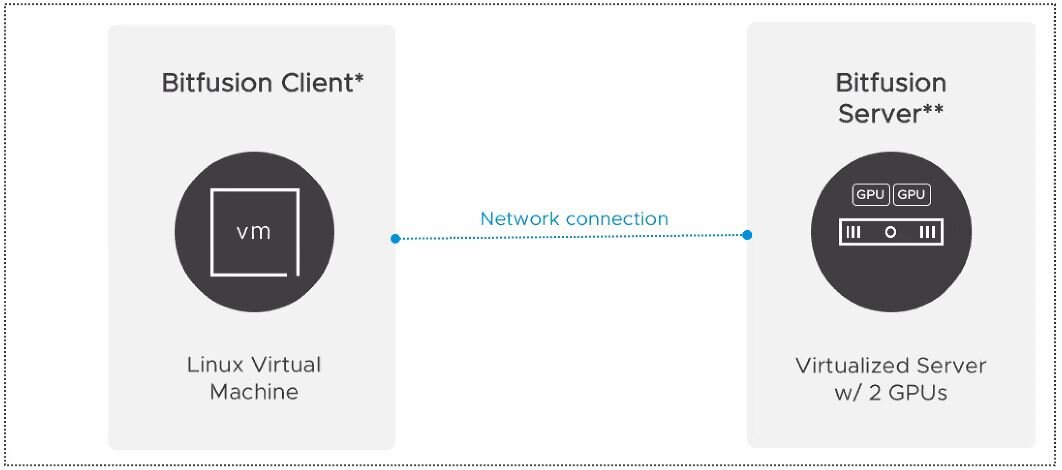VMware vSphere Bitfusion is Here! (Almost)
Bitfusion’s integration with vSphere will launch in Q2 FY2021
As Machine Learning and Artificial Intelligence continues its growth into the modern datacenter, so too must the modern datacenter evolve. In July of 2019 VMware, a leading provider of virtualization and cloud infrastructure, announced their acquisition of Bitfusion to bolster their ability to meet the end users needs. Today, VMware announced that Bitfusion’s integration into vSphere will be available by the end of Q2 FY2021 (end of July 2020).
Bitfusion’s abstraction of the GPU (Graphics Processing Unit) layer offers the ability for administrators to pool GPU resources the same way VMware pools compute, memory, and storage resources. This allows for more efficiency around GPU usage, limiting over and under subscription of AI/ML servers. With the GPU pools, applications can be assigned the proper amount of GPU necessary to run each work load at its peak performance. VMware’s hardware acceleration of the GPU supplies resources faster and more efficiently than Bitfusion on it’s own.
In the first iteration of vSphere Bitfusion focuses on applications around computational math and ML. TensorFlow and PyTorch are called out as some of the best workflow candidates. Similarly, the initial version is not designed for VDI or any sort of real-time applications. Bitfusion works by intercepting CUDA calls via the CUDA API and sending them across the network to be processed in the GPU. At launch, the only GPU supported by vSphere Bitfusion is NVIDIA, but there are other manufacturers on the road map.
vSphere Bitfusion High Level Architecture
vSphere Bitfusion utilizes a client - server model. The client runs the workload and the server provides the hardware acceleration. The Bitfusion server will run on a virtualized platform and require GPUs. The supported version for the Bitfusion Server is ESXi 7.0. The client will run on a Linux virtual machine. The client can only run on a Linux based Virtual Machine. This client can also be a container and works with any supported version of vSphere 6. and higher. There is no limit to the number of Bitfusion clients and Servers that can exist in an environment. However, each client shares only from one server at a time. Ideally, there should be a maximum of 50 microseconds latency between the client and the server.
The vSphere Bitfusion Server requires vSphere Enterprise Plus licensing. The client requires no other licensing requirements outside of utilizing your existing VMware licensing for the hosts. There are no other changes to the way GPUs are utilized in vSphere. VMwar does warn that this does not apply to any future ASIC or FPGA support around Bitfusion. And as VMware has truly integrated Bitfusion into vSphere, management is performed directly in vCenter Server.
To learn more about VMware vSphere Bitfusion, check out the following links:
Bitfusion Acquisition Announcement


